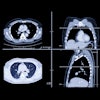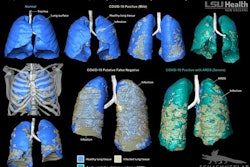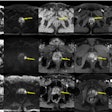Dear AuntMinnie Member,
One of the more disturbing aspects of COVID-19 is the impact of the disease on the brain. In our top story for the week, we cover how researchers from the U.S. National Institutes of Health (NIH) revealed findings showing that brain damage in COVID-19 patients may be due to the body's inflammatory response rather than attacks by the SARS-CoV-2 virus.
An NIH team performed MRI scans on brain tissue samples of COVID-19 patients who died of the disease. The group found evidence of microvascular blood vessel damage -- but no signs of infection with the SARS-CoV-2 virus.
In another story in our MRI Community, researchers from Emory University in Atlanta wanted to find a quicker way to determine whether patients with embedded bullet fragments can undergo MRI scans. Some types of bullets are nonferromagnetic, but it's hard to tell without examining shell casings. Fortunately, CT and x-ray can help clinicians make a determination.
These articles are available in our MRI Community.
AI for lung screening
The arrival of CT for lung cancer screening was a major step forward in reducing mortality from this disease. But a big question has been exactly who should be getting screened.
Researchers from Brigham and Women's Hospital in Boston developed an artificial intelligence (AI) algorithm for predicting who may be at greatest risk of lung cancer. Their work was highlighted in a review published in the American Journal of Roentgenology this week.
Other important CT stories this week include research on using CT pulmonary angiography to predict the likelihood of pulmonary embolism in patients with chronic obstructive pulmonary disease, as well as the use of CT to plan facial feminization surgery in transgender patients.
These stories and more can be found in our CT Community.
SalaryScan 2021
If it's January, it's time for self-reflection and self-improvement. That's why we're pleased to launch SalaryScan 2021, our annual project to provide our members with the most current, up-to-date data on compensation and benefits in radiology.
Last year's SalaryScan, for example, showed radiologist salaries breaking through the $400,000 ceiling for the first time. The year prior, it demonstrated that interventional radiologists were the highest-paid among imaging subspecialties.
What will the 2021 SalaryScan numbers show? We won't know without your input. Just take a few minutes to participate in our SalaryScan survey, which will be open for the next six weeks. Your responses will be totally anonymous, and you'll be helping yourself and your colleagues.



















